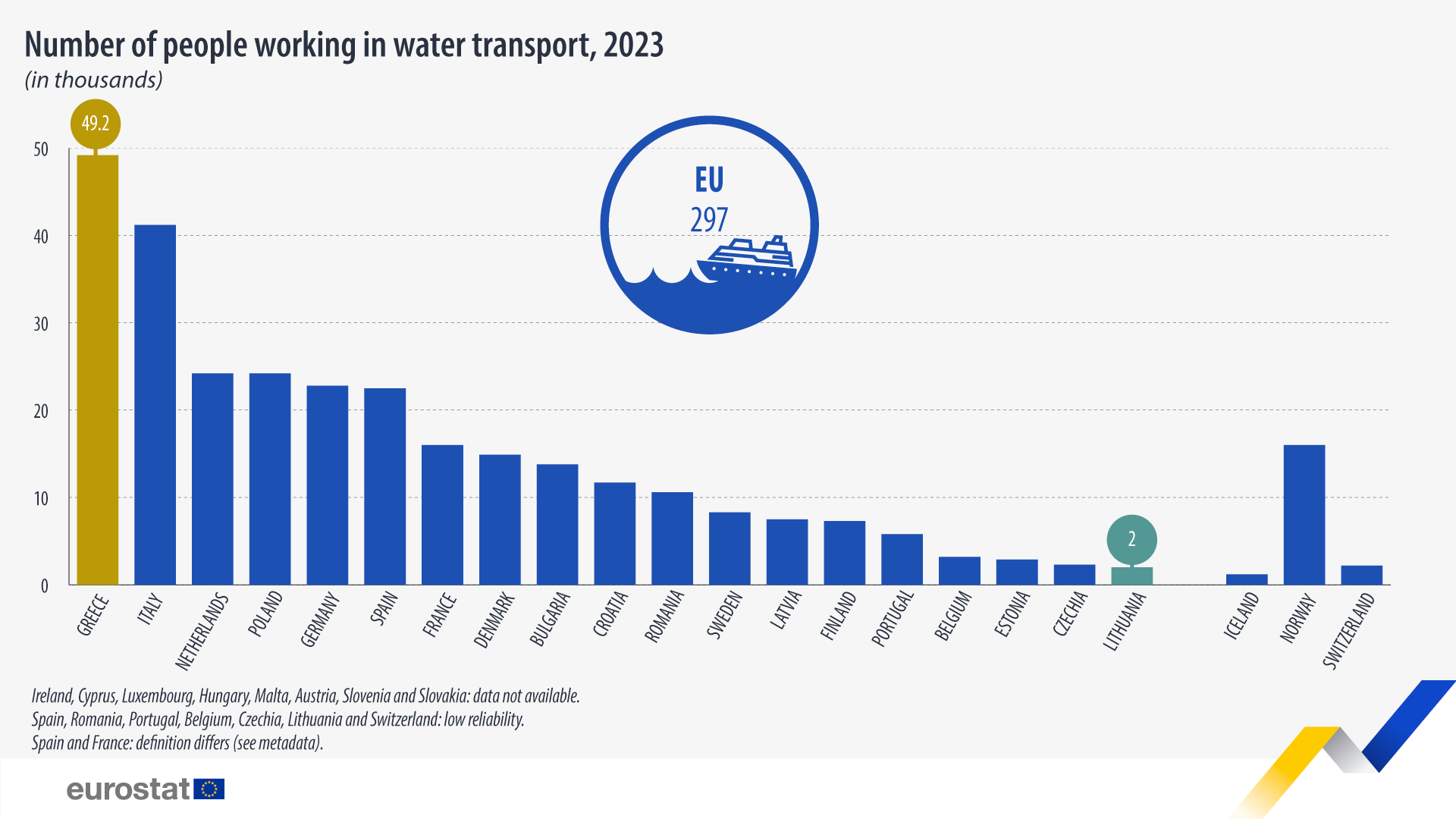Water transport employed 297 000 people in 2023

In the EU, 297 000 people, aged 15-64, worked in water transport in 2023 (0.15% of total employment). Among them, almost 8 out of 10 were men (79% men compared with 21% women).
Among the EU countries, the largest number of people employed in water transport was recorded in Greece (49 200 people; 16.6% of all employed in the water transport in the EU), followed by Italy (41 200; 13.9%). These two countries employed almost a third (30.5%) of the total employment in water transport in the EU. The Netherlands and Poland followed, each with 24 200 or 8.1%.
Source dataset: lfsa_egan22d
At the opposite end of the scale, the EU countries with the lowest numbers were Lithuania (2 000; 0.7%), Czechia (2 300; 0.8%) and Estonia (2 900; 1.0%).
This article marks the Day of the Seafarer which takes place on 25 June.
For more information
- Thematic section on the labour market
- Database on the labour market
- Thematic section on transport
- Database on transport
- Webinar on transport statistics
- Key figures on European transport
Methodological notes
- Water transport activity, as defined by Section H 50 of statistical classification of economic activities in the European Community (NACE), includes the transport of passengers or freight over water. Also included are the operation of towing or pushing boats, excursion, cruise or sightseeing boats, ferries, water taxis etc. Activity covers sea, coastal and inland water transport.
- Ireland, Cyprus, Luxembourg, Hungary, Malta, Austria, Slovenia and Slovakia: data not available.
- Czechia, Luxembourg, Hungary, Austria, Slovakia and Switzerland: no sea access.
- Belgium, Czechia, Germany, Lithuania, Portugal and Romania: low data reliability, due to limited coverage in the EU Labour Force Survey.
- Spain and France: definition differs (see metadata).
If you have any queries, please visit our contact us page.

